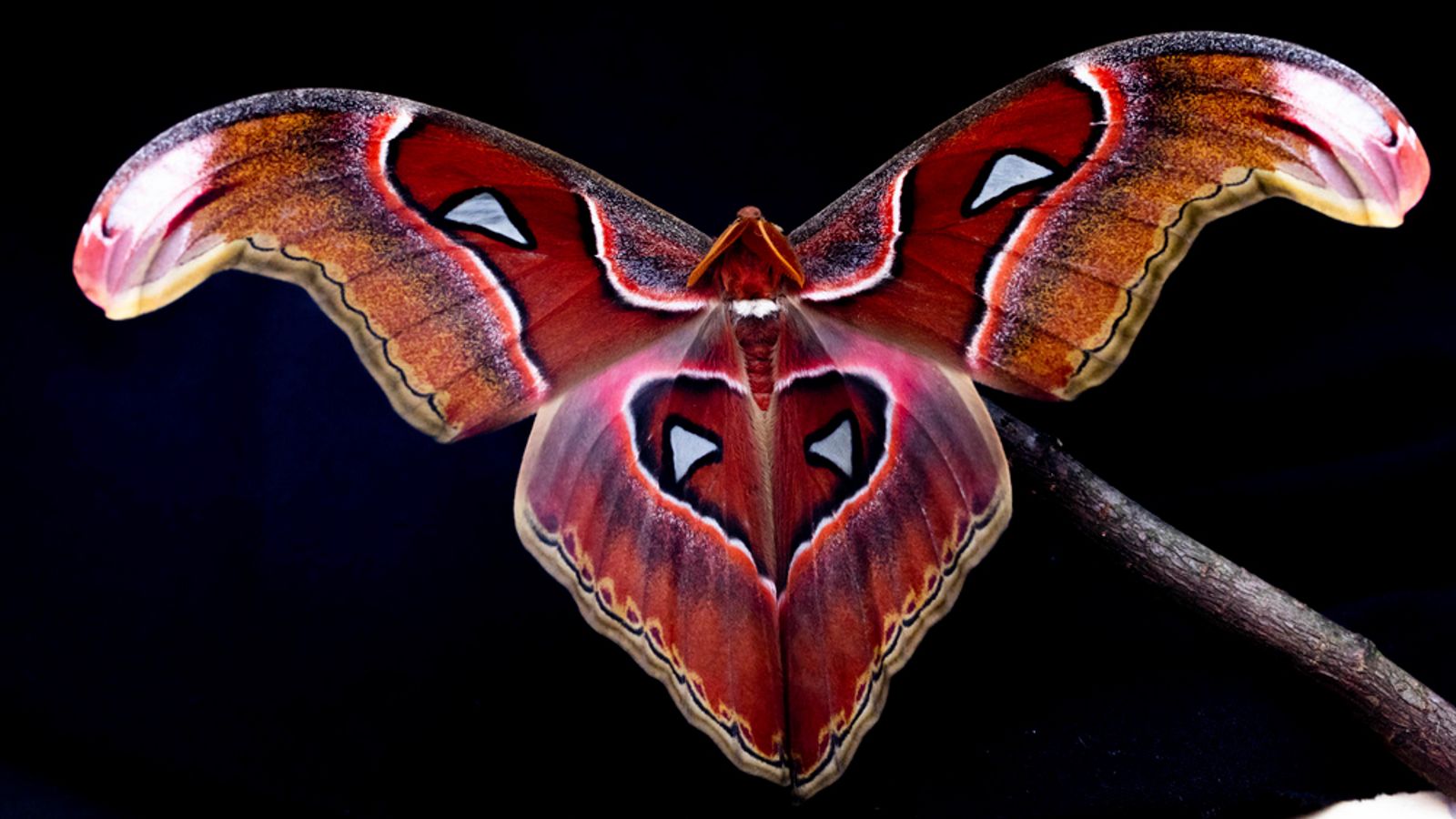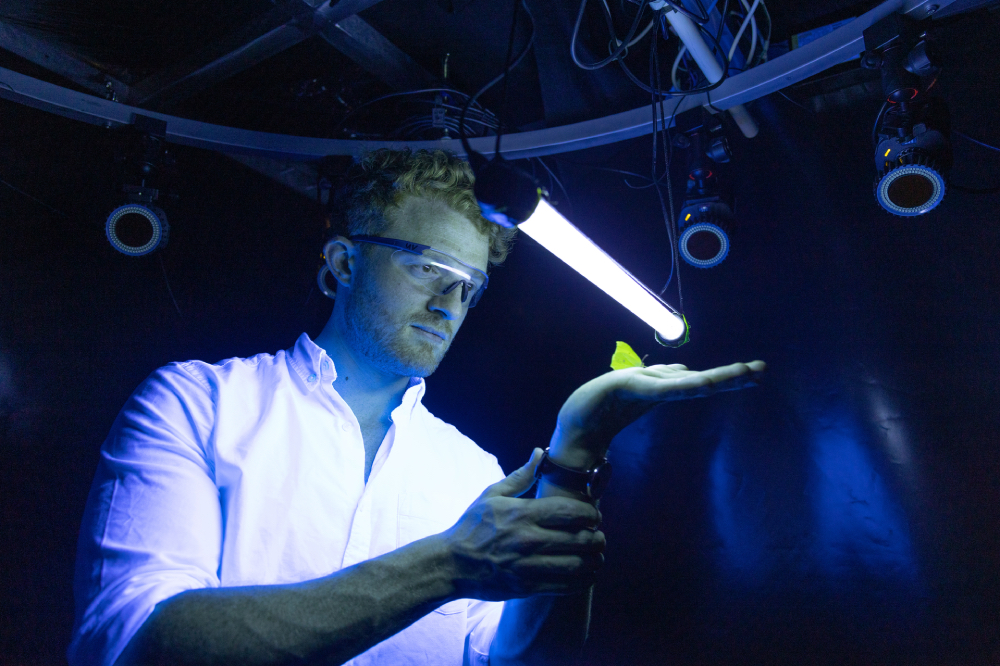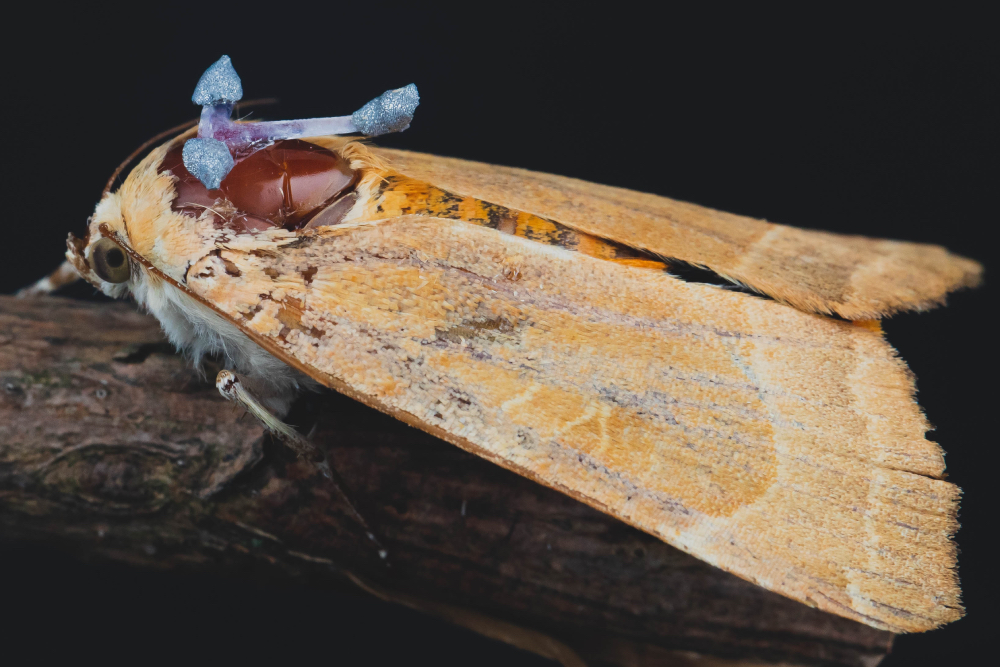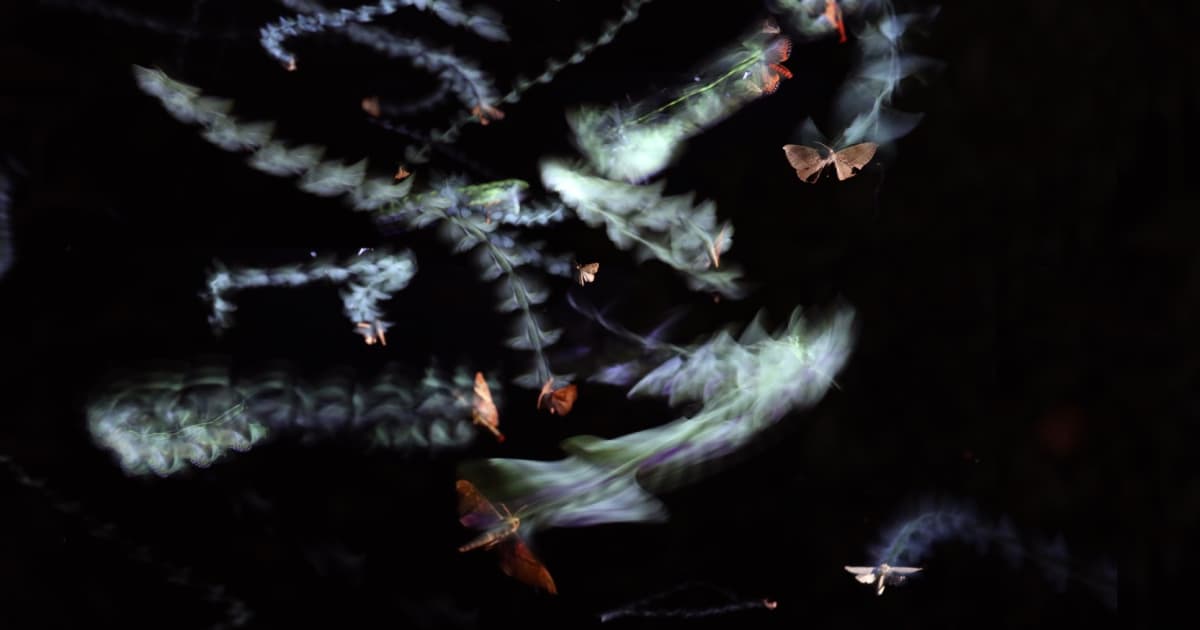Insects are attracted to artificial light at night, but the reason for this behavior is not well understood. A new study by a team of researchers from Imperial College London and Costa Rica has shed some light on the matter. The study found that insects have a navigational problem when it comes to flying in low-light conditions, and they use artificial lights as cues to orient themselves in space and time.
Insects' Navigational Problem: How Artificial Light Aids Orientation in Low-Light Conditions
Costa RicaA new study by a team of researchers from Imperial College London and Costa Rica has shed some light on the matter. The study found that insects have a navigational problem when it comes to flying in low-light conditions, and they use artificial lights as cues to orient themselves in space and time.
Insects are attracted to artificial light at night
The reason for this behavior is not well understood.





Confidence
80%
Doubts
- It's not clear if the study is representative of all insect species.
- The study only looked at a specific type of insect, so it may not be applicable to other types.
Sources
66%
Are insects drawn to light? New research shows it's confusion, not fatal attraction
The Associated Press News CHRISTINA LARSON Tuesday, 30 January 2024 16:57Unique Points
- Insects have a navigational problem.
- They're accustomed to using light as a cue to know which way is up.
- Artificial lights at night may actually scramble flying insects innate navigational systems, causing them to flutter in confusion around porch lamps, street lights and other artificial beacons.
Accuracy
No Contradictions at Time Of Publication
Deception (30%)
The article is deceptive in its portrayal of insects being attracted to light. The author uses the phrase 'like a moth to flame' which implies that insects are drawn to bright lights due to their innate attraction. However, this is not what the study found.- The article states that flying insects were simply, inexorably drawn to bright lights.
Fallacies (85%)
The article contains an informal fallacy called 'appeals to authority'. The author cites a study published in the journal Nature Communications as evidence that insects are not attracted to light but rather their navigational systems are disrupted by artificial lights. However, the article does not provide any direct quotes from the study or link to it for further reading. Additionally, there is an example of a formal fallacy called 'circular reasoning' in the sentence 'Insect flight was least disrupted by bright lights that shine straight downward'. This statement assumes that because insects are able to fly without being attracted to light, they must be less affected by artificial lights shining straight downwards. However, this is not necessarily true and further research would need to be conducted to determine the effect of different types of lighting on insect flight.- The article contains an informal fallacy called 'appeals to authority'. The author cites a study published in the journal Nature Communications as evidence that insects are not attracted to light but rather their navigational systems are disrupted by artificial lights. However, the article does not provide any direct quotes from the study or link to it for further reading.
- There is an example of a formal fallacy called 'circular reasoning' in the sentence 'Insect flight was least disrupted by bright lights that shine straight downward'. This statement assumes that because insects are able to fly without being attracted to light, they must be less affected by artificial lights shining straight downwards. However, this is not necessarily true and further research would need to be conducted to determine the effect of different types of lighting on insect flight.
Bias (75%)
The article presents a balanced view of the topic and does not show any clear bias. However, there are some examples that suggest an ideological bias towards environmentalism.- < Insect flight was least disrupted by bright lights that shine straight downward>
- The researchers found
- > The study suggests that artificial lights at night may actually scramble flying insects' innate navigational systems
Site Conflicts Of Interest (50%)
Christina Larson has a conflict of interest on the topic of insects and artificial lights at night. She is affiliated with The University of North Carolina, Chapel Hill which may have financial ties to companies that produce or sell navigational systems.- .biologist.
Author Conflicts Of Interest (50%)
The author has a conflict of interest on the topic of insects and artificial lights at night. The article mentions that Tyson Hedrick is an expert in navigational systems and porth lamps, street lights and other artificial beacons.- .biologist.
85%
Scientists have a new theory of what attracts insects to lights
Business Insider Jenny McGrath Wednesday, 31 January 2024 21:33Unique Points
- Scientists have observed that insects are attracted to artificial light at night.
- Insects turn their back toward the light and often crash when it is below or horizontal to their flight path.
- Dorsal light response helps insects orient themselves by using the sky as a reference point for up direction.
Accuracy
No Contradictions at Time Of Publication
Deception (100%)
None Found At Time Of Publication
Fallacies (85%)
The article contains an informal fallacy known as 'appeals to authority'. The author cites the opinions of several experts without providing any evidence or reasoning for their claims. Additionally, the article contains a formal fallacy known as 'circular reasoning', where the conclusion is based on a premise that was derived from it.- The researchers observed strange paths in the flight patterns of insects attracted to lights at night.
Bias (100%)
None Found At Time Of Publication
Site Conflicts Of Interest (50%)
Jenny McGrath has a financial stake in the company that produces lights used for insect research.Author Conflicts Of Interest (50%)
Jenny McGrath has a financial stake in the company that produces lights used to attract insects. She also has personal relationships with Sam Fabian and Yash Sondhi who are involved in research on this topic.
60%
Revealed: Why flying insects seem drawn to bright lights
Sky News Limited Wednesday, 31 January 2024 21:35Unique Points
- Flying insects are attracted to artificial lights due to confusion caused by the invention of artificial sources of light.
- Insects do not fly directly into a light source, but instead tilt their backs towards it. This makes sense if the strongest light source is in the sky, but in the presence of artificial lights, there is mid-air confusion as insects flutter erratically.
- For millions of years, insects oriented themselves by sensing that the sky is light and the ground is dark. This study shows how this changes with artificial lighting.
Accuracy
- Insects have a navigational problem because they are accustomed to using light as a cue to know which way is up. The invention of artificial lights has changed the environment for insects.
- Bright lights that shine straight downward least disrupt insect flight.
Deception (30%)
The article is deceptive in several ways. Firstly, it states that flying insects are attracted to street lamps but the actual reason is due to confusion caused by artificial lights. However, this statement contradicts itself as it implies that there was a previous understanding of why insects were drawn to street lamps which does not align with the current research presented in the article. Secondly, it states that insects do not fly directly into a light source but tilt their backs towards the light instead. This is misleading as it suggests that flying straight at a light source would be harmful or dangerous for insects when in fact they are capable of doing so without any issues.- The article states that flying insects are attracted to street lamps, but this contradicts itself by stating the actual reason is due to confusion caused by artificial lights. This statement is misleading and deceptive as it implies a previous understanding of why insects were drawn to street lamps which does not align with the current research presented in the article.
- The article states that insects do not fly directly into a light source, but tilt their backs towards the light instead. This is misleading as it suggests that flying straight at a light source would be harmful or dangerous for insects when in fact they are capable of doing so without any issues.
Fallacies (70%)
The article contains several fallacies. The first is an appeal to authority when it states that experts believe the reason flying insects are drawn to bright lights is because of confusion caused by artificial lights. This statement implies that these experts have conducted research and found this conclusion, but no evidence or citations are provided to support this claim.- Flying insects do not fly directly into a light source, but actually tilt their backs toward the light.
Bias (70%)
The article contains examples of religious bias. The author uses the phrase 'confused surroundings' to describe how insects are affected by artificial lights, which implies that natural light is not confusing for them. This is a misrepresentation as insects have always sensed 'the sky is light, the ground is dark'. Additionally, the article mentions that some insects will flip upside down and crash land in the presence of a source shining straight up. The author does not provide any context or explanation for this behavior which could be due to other factors such as fatigue or disorientation caused by artificial light.- The invention of artificial sources of light confused the surroundings for insects because they had always sensed
Site Conflicts Of Interest (50%)
The article discusses the behavior of flying insects and their attraction to artificial light sources. The author is an Imperial College London entomologist who co-authored a new study on this topic.- .
- 'tilt their backs toward the light, . . Insects do not fly directly into a light source, but actually tilt their backs toward the light
Author Conflicts Of Interest (0%)
None Found At Time Of Publication
62%
‘Like a moth to a flame’ — this strange insect behaviour is finally explained
Nature Magazine Fox, Dan Wednesday, 31 January 2024 21:35Unique Points
- Moths and other insects are attracted to artificial lights at night.
- The dorsal light response is a reflex that causes flying insects to twist their bodies in order to keep their backs facing the light source. This results in them getting stuck in a loop around it.
Accuracy
No Contradictions at Time Of Publication
Deception (50%)
The article is deceptive in that it presents the idea that moths and other insects are attracted to light bulbs because they find them hot. However, this explanation has been debunked by previous research which showed that insects do not rely on heat for their attraction to light. The author also fails to disclose any sources or provide evidence for their claims.- The author fails to disclose any sources or provide evidence for their claims.
- The article states that moths and other insects are attracted to light bulbs because they find them hot, but this explanation has been debunked by previous research which showed that insects do not rely on heat for their attraction to light.
Fallacies (85%)
The article contains an informal fallacy known as 'appeals to authority'. The author cites a study by Fabian et al. without providing any evidence or details about the research methodology used in the study.- ]Fabian et al. Subscribe to Nature Briefing, an unmissable daily round-up of science news, opinion and analysis free in your inbox every weekday.
Bias (85%)
The article contains a statement that all sorts of insects congregate around artificial lights at night. This is an example of monetary bias as the author implies that there are financial interests behind this phenomenon.- ]All sorts of insects congregate around artificial lights at night.
Site Conflicts Of Interest (0%)
The article by Fox, Dan titled 'Like a moth to a flame' discusses the strange behavior of insects and attempts to explain it. However, there are multiple conflicts of interest that could compromise the objectivity and impartiality of the author.Author Conflicts Of Interest (0%)
The author has a conflict of interest on the topic of moths and insects as they are discussing their behavior around artificial lights. The article does not disclose this conflict.
58%
Millennia-old mystery about insects and light at night gets new explanation
Florida International University News Angela Nicoletti Wednesday, 31 January 2024 21:36Unique Points
- Insects experience rapid acceleration when flying that makes their gravity sensing unreliable.
- A motion capture arena like the kind used in movies was used to track the 3D flight of insects. Little markers were affixed along their backs so when they flew around light, data was collected on how they rolled, rotated and moved through three-dimensional space.
Accuracy
No Contradictions at Time Of Publication
Deception (30%)
The article is deceptive in several ways. Firstly, the author claims that insects need the sky to discern which way is up and cruise along while maintaining control in flight at night. However, this statement contradicts scientific evidence that shows insects have a natural ability to navigate using celestial cues even during daylight hours. Secondly, the article implies that artificial light messes with insect vision and disorientation of gravity sensing which is not supported by any scientific studies or research findings mentioned in the article.- The statement 'insects need the sky to discern which way is up' contradicts scientific evidence.
Fallacies (70%)
The article contains an appeal to authority fallacy by stating that the research was conducted by a group of specialists in the fields of insect flight and sensory systems. The author also uses inflammatory rhetoric when describing how flying insects experience rapid acceleration and their gravity sensing becomes unreliable, which is not necessarily true for all types of insects.- The article states that 'flying ones, like insects' have such rapid acceleration that their gravity sensing becomes unreliable. This statement implies a universal truth about all flying insects without providing evidence to support it.
Bias (75%)
The article contains a statement that implies the author has an ideological bias towards science and technology. The sentence 'Artificial light, however, messes with this system.Site Conflicts Of Interest (50%)
Angela Nicoletti has a conflict of interest on the topic of insects due to her affiliation with Sondhi. She also has a personal relationship with Sam Fabian and Huai-Ti Lin which could affect her objectivity.Author Conflicts Of Interest (0%)
Angela Nicoletti has a conflict of interest on the topic of insects as she is an author for Sondhi and Jamies Theobald. She also has a professional affiliation with Sam Fabian.